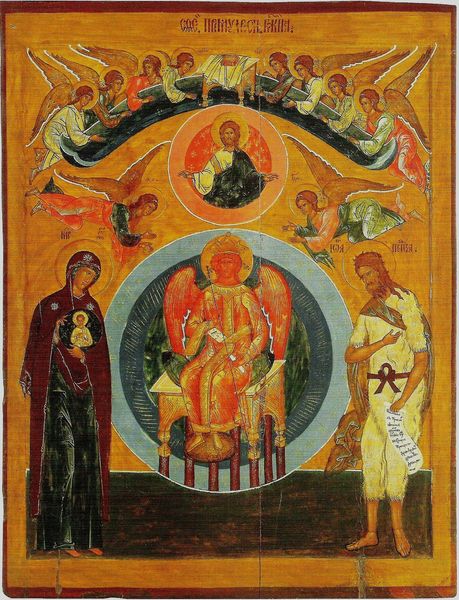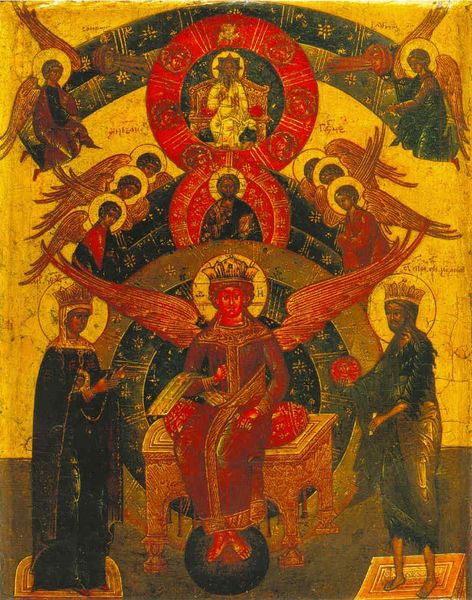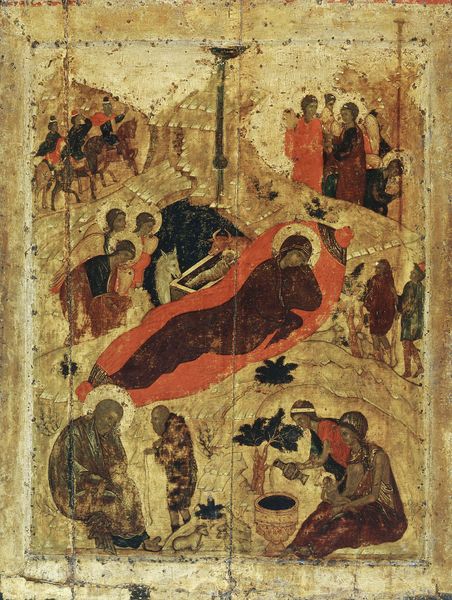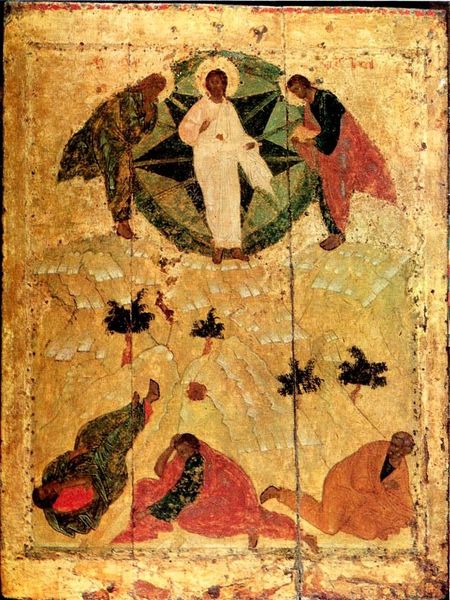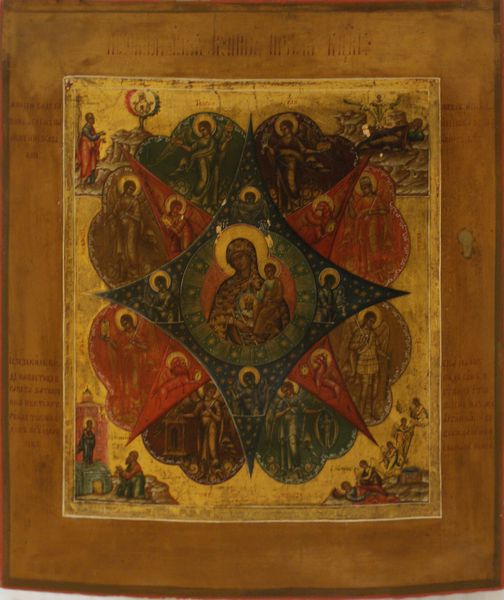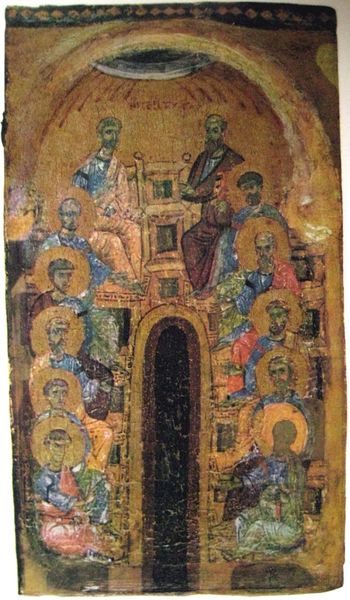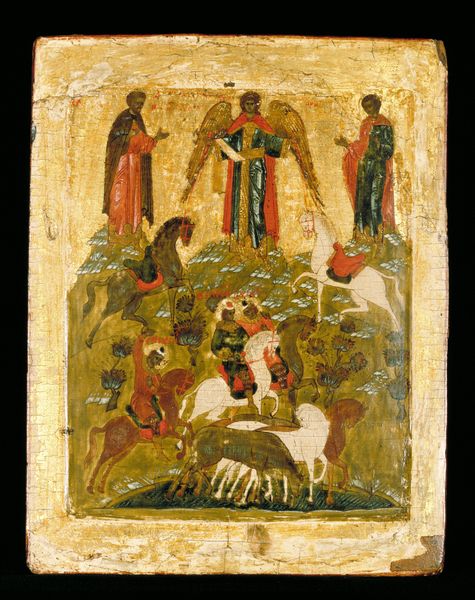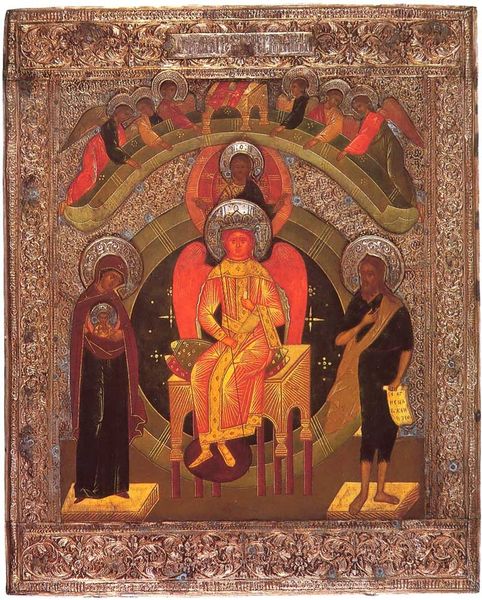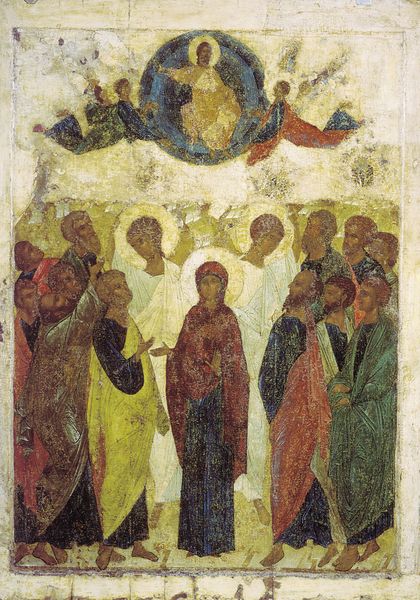
Only-Begotten Son and Immortal Word of God 1600
0:00
0:00
orthodoxicons
Yaroslavl Museum of Fine Arts, Yaroslavl, Russia
tempera, painting
#
byzantine-art
#
medieval
#
narrative-art
#
tempera
#
painting
#
figuration
#
oil painting
#
history-painting
Dimensions: 153 x 115 cm
Copyright: Orthodox Icons,Fair Use
Curator: Standing before us is "Only-Begotten Son and Immortal Word of God," a tempera painting dating back to 1600, and currently held at the Yaroslavl Museum of Fine Arts. It’s an exceptional piece of Byzantine art. What are your immediate thoughts? Editor: My initial impression is of a deeply layered narrative—almost overwhelmingly so. The use of hierarchical scale draws my eye upwards, towards those divine figures at the top. There is so much violence in the lower parts and such vivid coloring throughout, that adds so much drama. Curator: Exactly. Iconography served a vital public role then. These weren't just decorative; they instructed a largely illiterate populace in theological principles. Considering that, what does the visual arrangement convey about societal power? Editor: I would argue it showcases the Church as a powerful moral arbiter, dictating right from wrong, literally placing salvation above damnation. Look at the suffering in that hellscape compared to the serene saints above. Curator: Precisely. This duality is a prominent feature. Observe the depiction of the "Only-Begotten Son," not as an infant, but pre-existent and eternal. What interpretations might stem from placing such an entity centrally in the composition? Editor: It reinforces the notion of divine mandate, emphasizing the unchanging nature of religious law and its relevance across social classes. The artwork presents the divine presence not only as eternal but also as actively judging, promising retribution and also reward. Curator: It’s tempting to view the painting merely as a didactic tool but looking at the details one might ask about how the materiality and color work towards reinforcing, or possibly even subtly undermining, these messages? Editor: Good point. The gold leaf suggests divine radiance and unearthly quality but simultaneously speaks of the wealth and the authority needed to commission it, pointing to societal hierarchies deeply embedded within the institution of the Church. It almost reflects back the politics of imagery inherent in the whole endeavor. Curator: It's the kind of paradox that invites contemplation beyond mere faith; to confront the complicated interaction of history, belief, and society. Thank you, this perspective certainly enriched our understanding. Editor: Likewise, analyzing this painting alongside our knowledge about social context made the divine characters somehow more human to me.
Comments
No comments
Be the first to comment and join the conversation on the ultimate creative platform.
